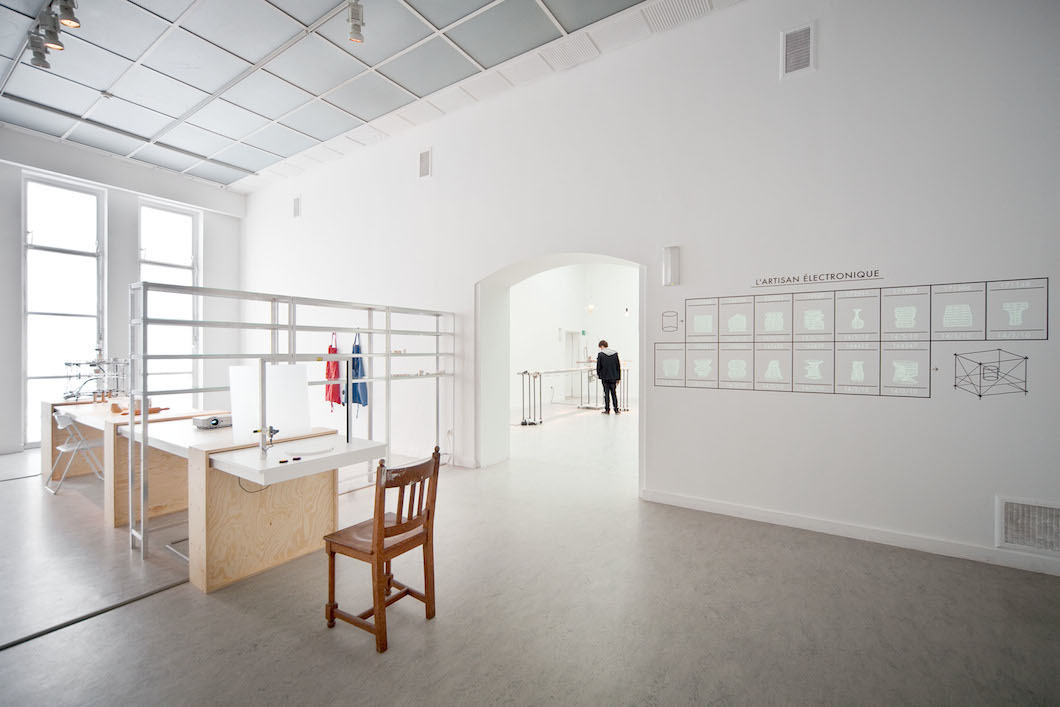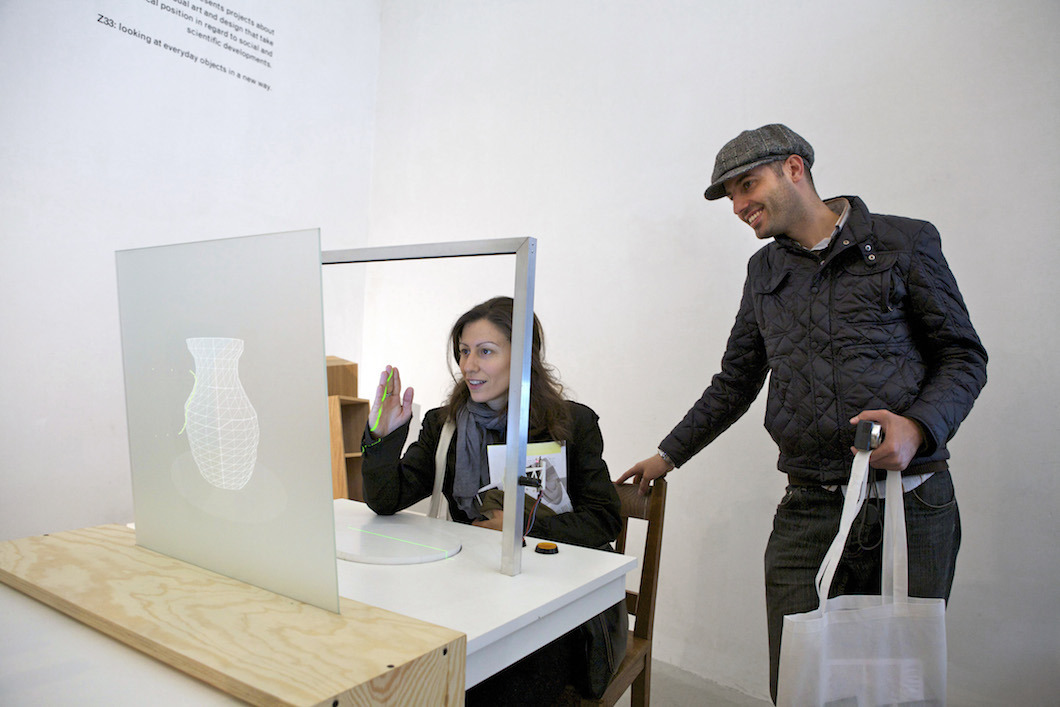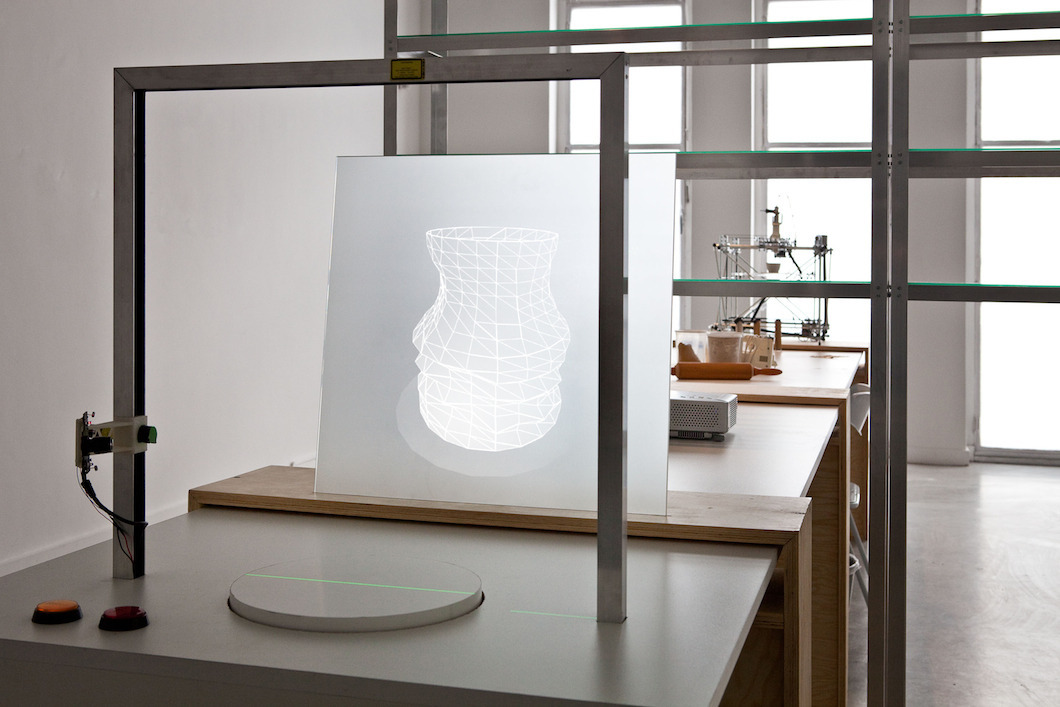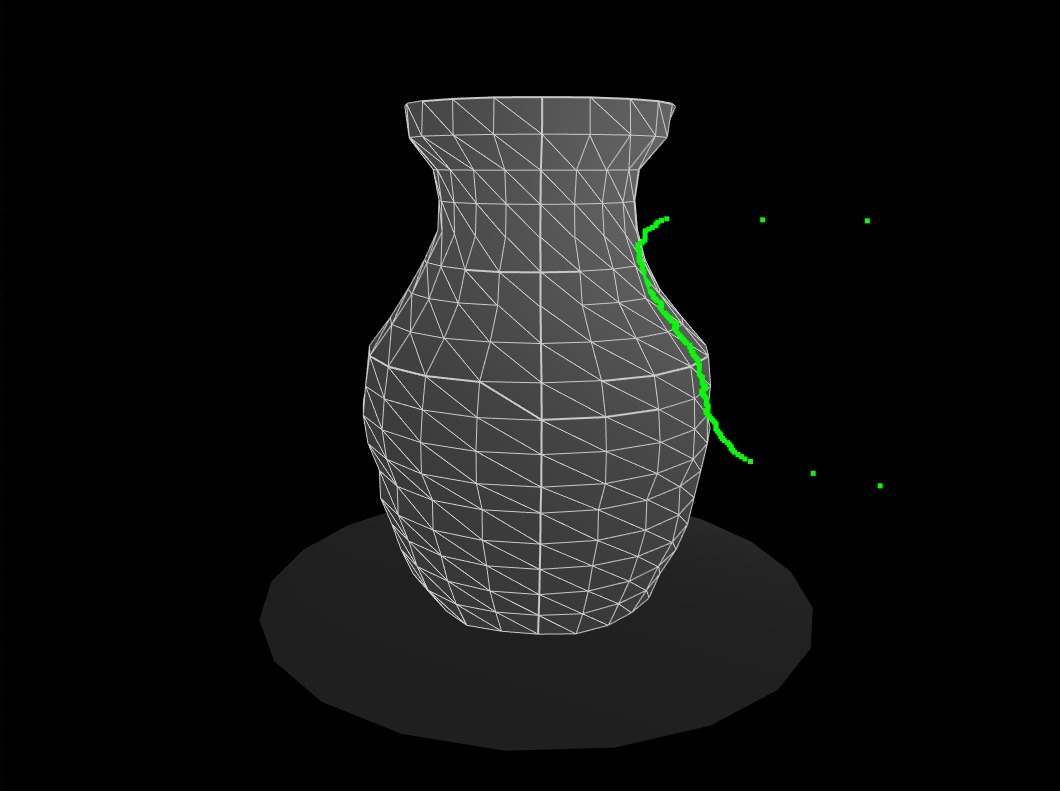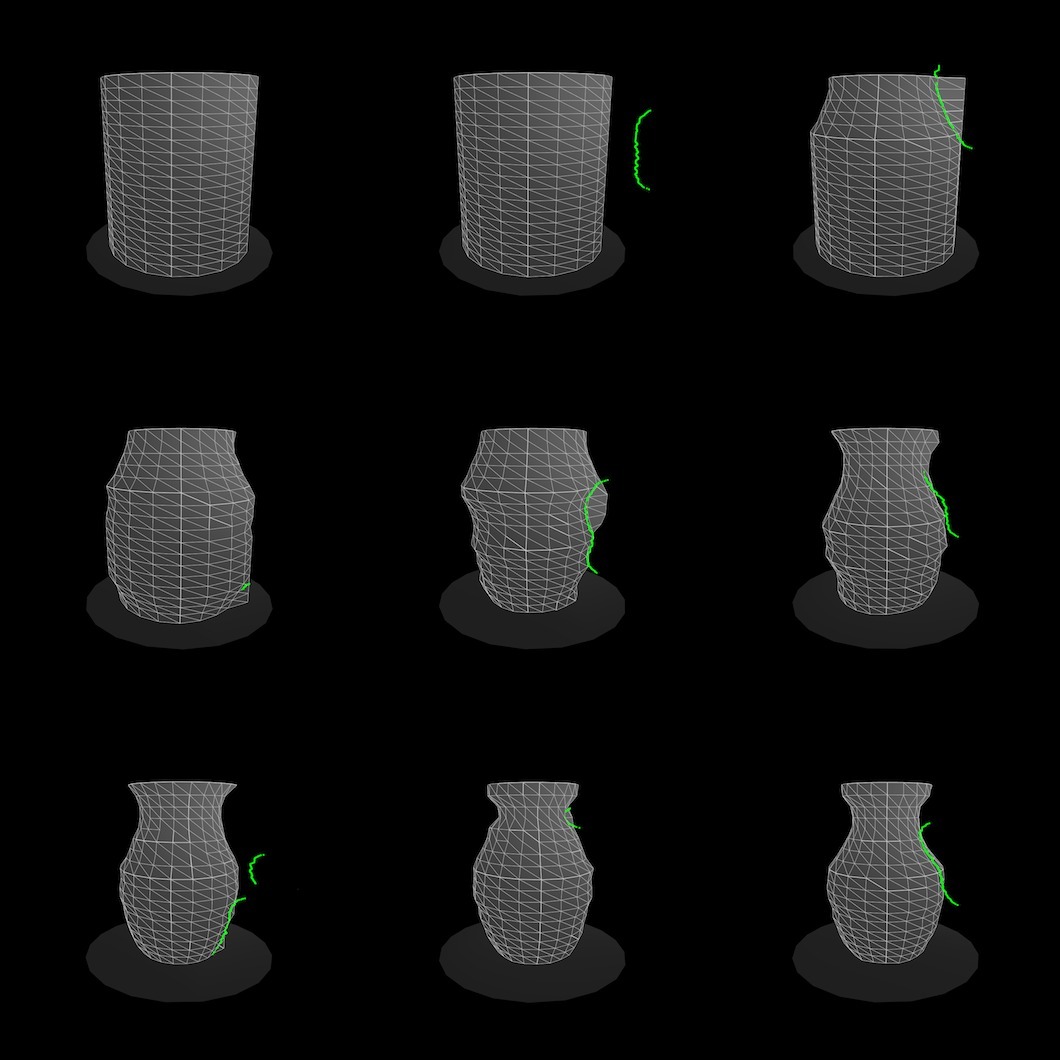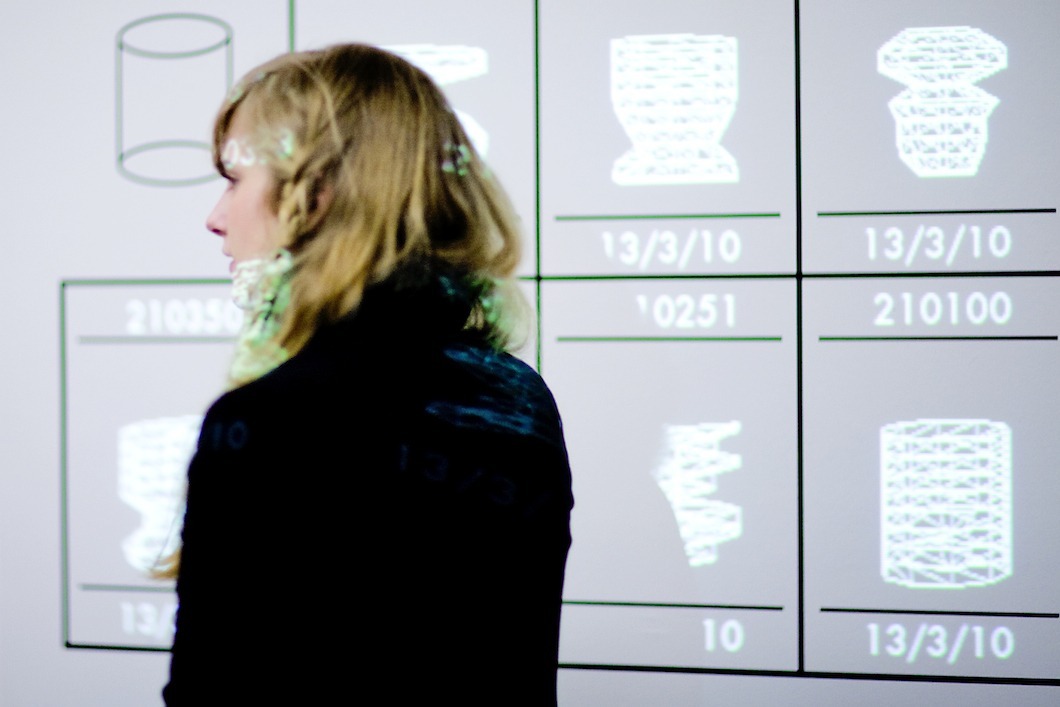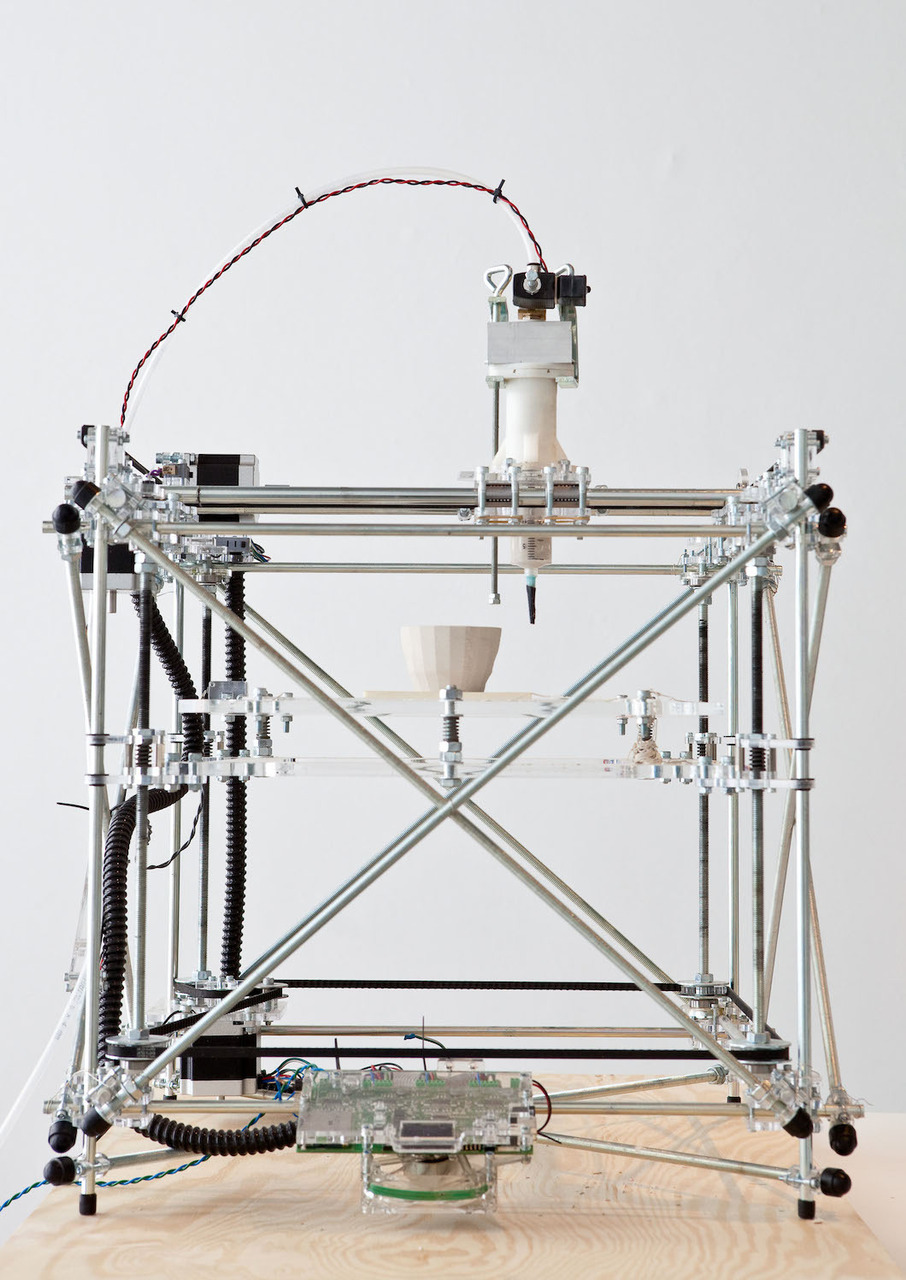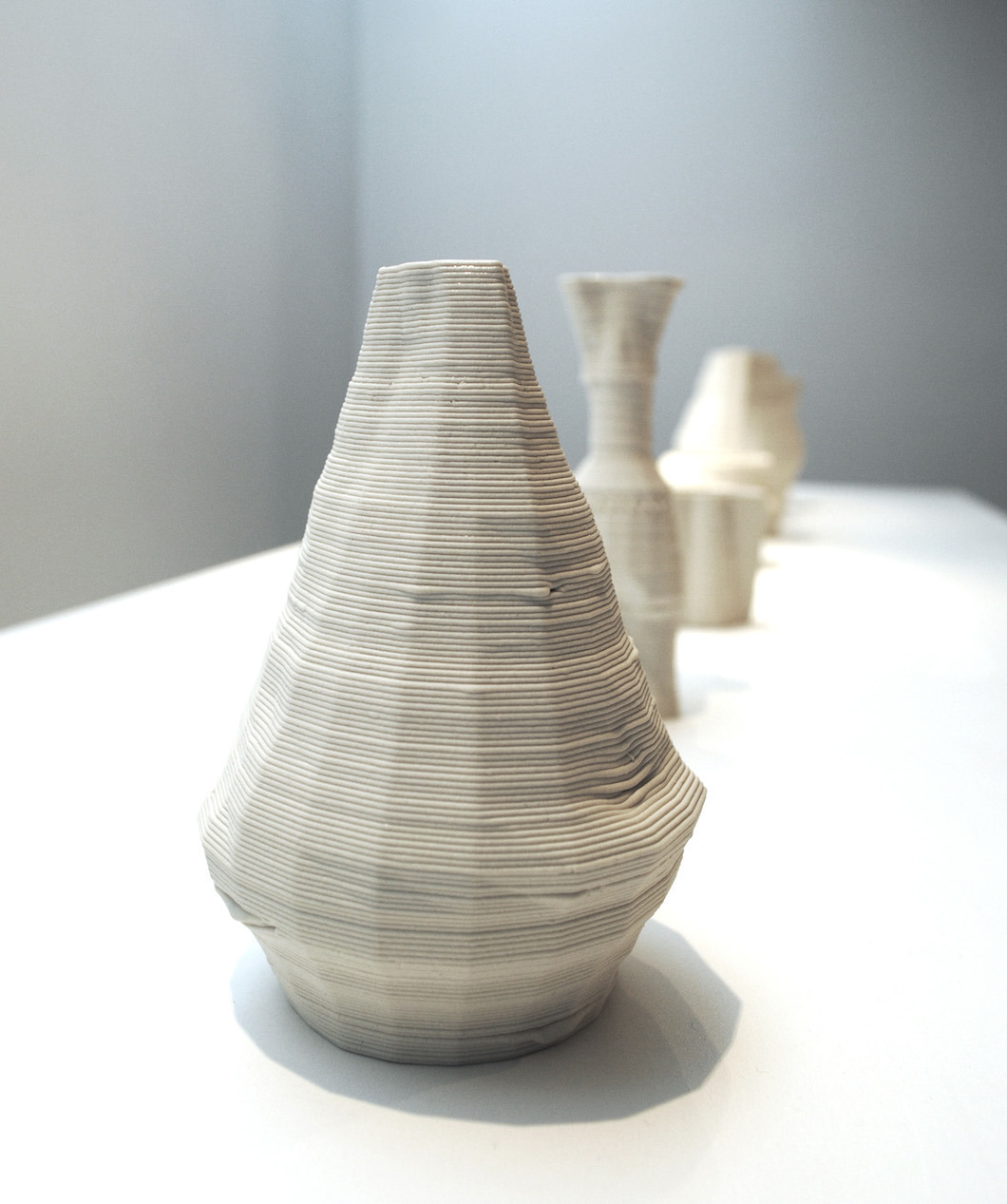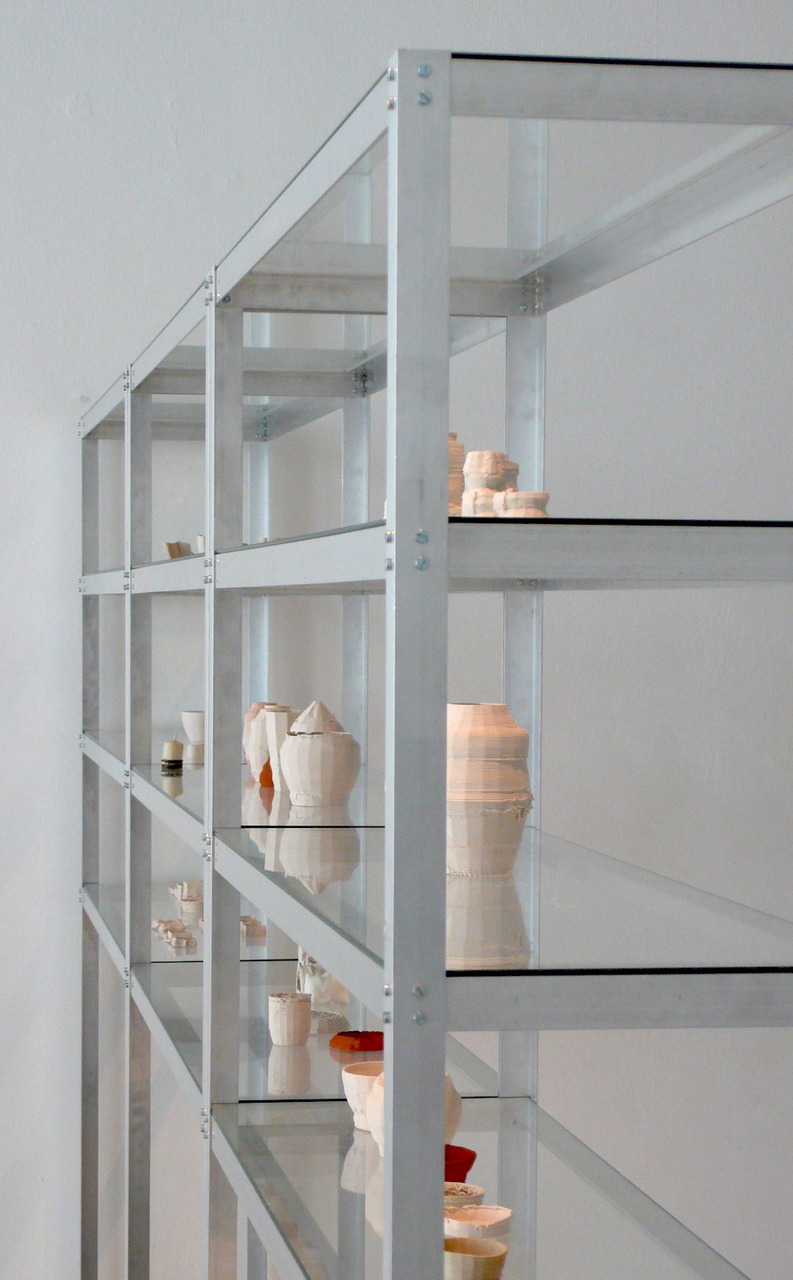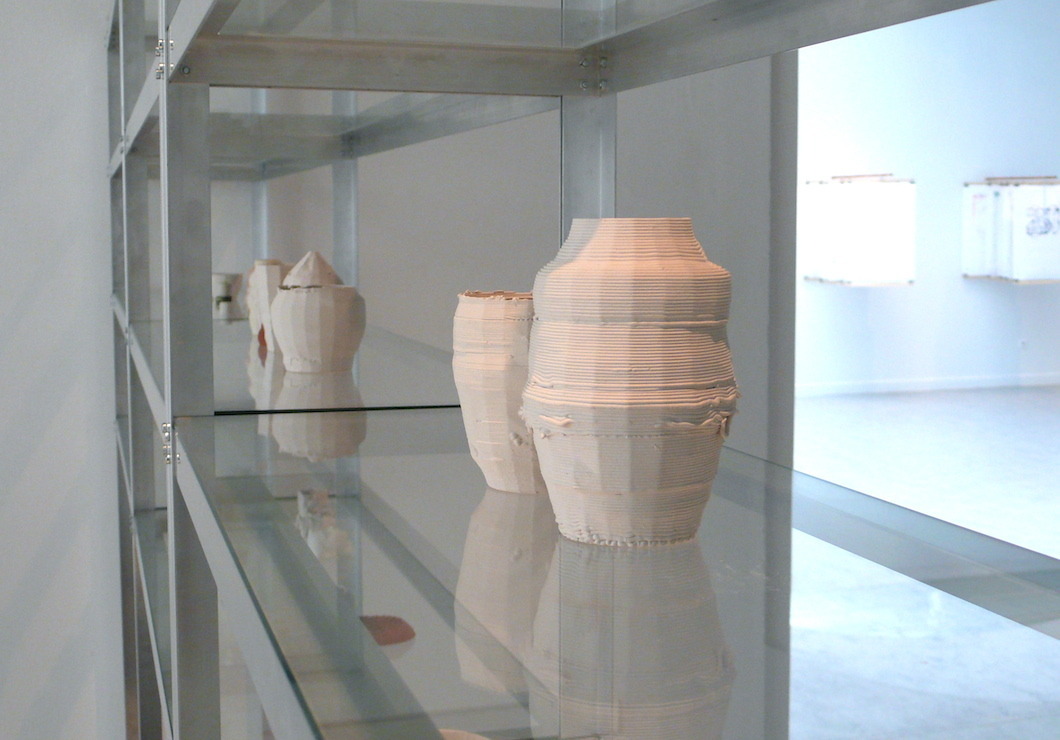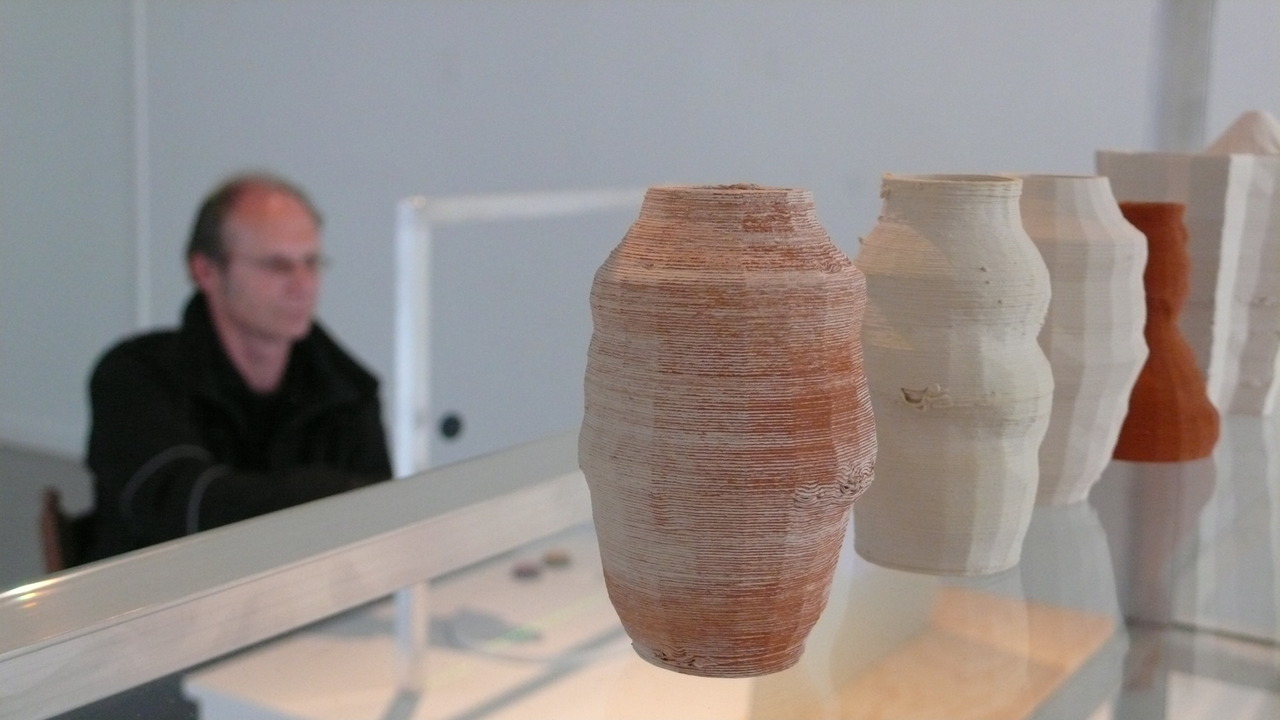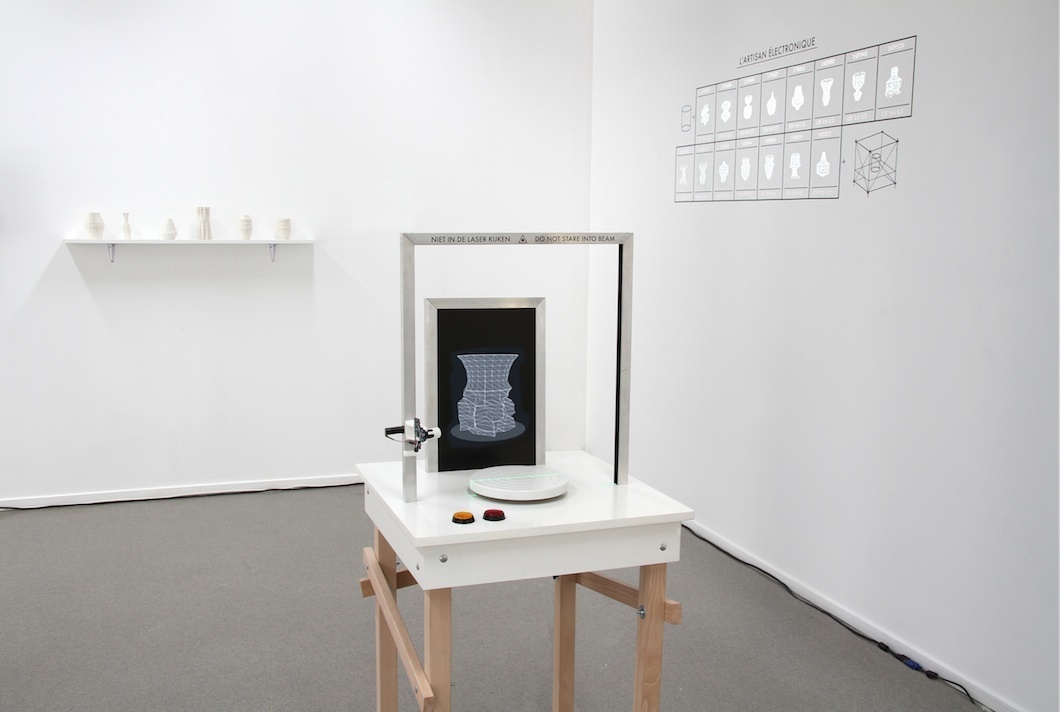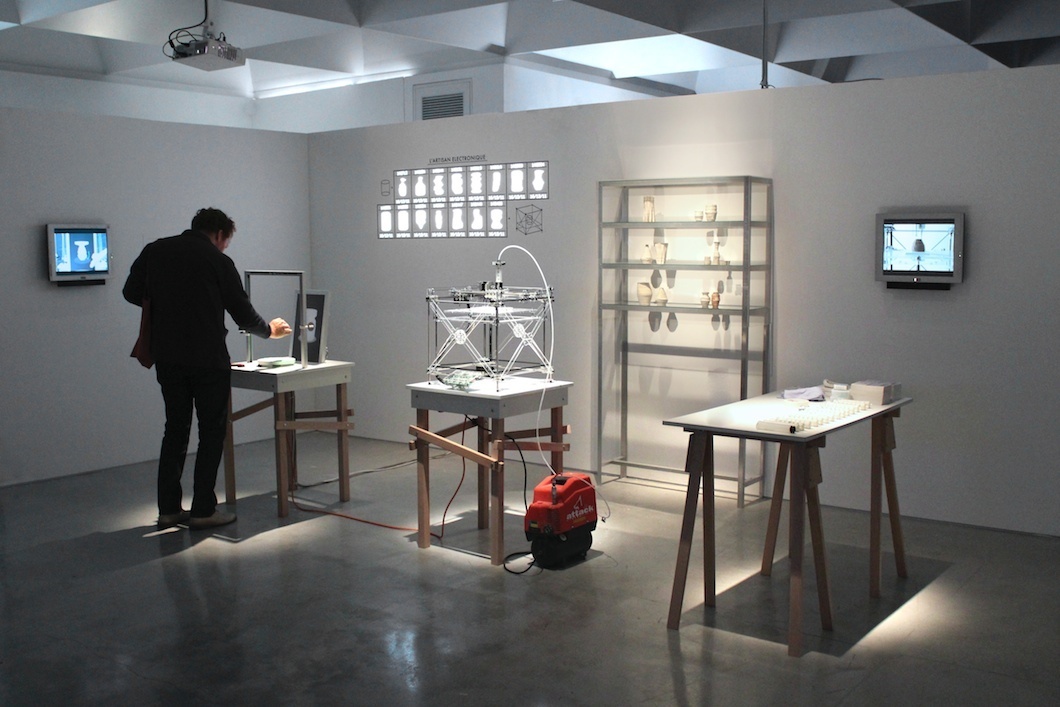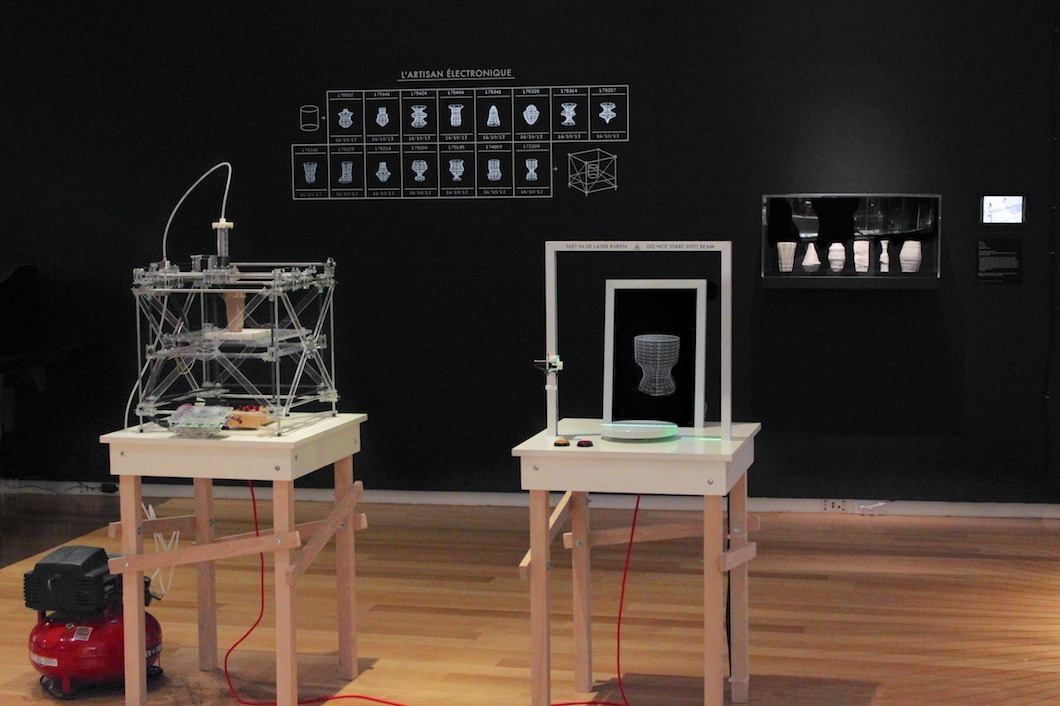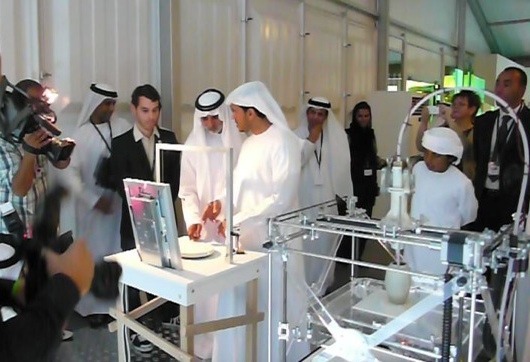While industry and craftsmanship are positioned
as polar opposites, they would be more accurately represented as
volatile points in a matrix of manual, mechanical, and electrical
forces. Wheel-thrown pottery, for example, though now considered an
artisanal skill, developed as a partial automation of coil pottery
by the third millennium, B.C., making the production of small clay
vessels more efficient. If industry is characterized by the
displacement of advanced operations from hands to machines, then
handicraft is defined by its retention of fine motor skills
mastered over years of practice. In l’Artisan
Électronique, designers Unfold and
Tim Knapen investigate the
intersection between craft, industry, and digital making, avoiding
easy categorisation.
While industry and
craftsmanship are positioned as polar opposites, they would be more
accurately represented as volatile points in a matrix of manual,
mechanical, and electrical forces. Wheel-thrown pottery, for
example, though now considered an artisanal skill, developed as a
partial automation of coil pottery by the third millennium, B.C.,
making the production of small clay vessels more efficient. If
industry is characterized by the displacement of advanced
operations from hands to machines, then handicraft is defined by
its retention of fine motor skills mastered over years of practice.
In l’Artisan Électronique, designers Unfold and
Tim Knapen investigate the
intersection between craft, industry, and digital making, avoiding
easy categorisation.
The project is set up as a miniature production center, featuring a
digital potter’s wheel connected to a
3D ceramic printer. As a
virtual cylinder spins on a computer screen, the user cuts away and
elaborates its shape by passing his or her hand through a laser.
When satisfied with the final form, the user can submit the
customised model to a digital archive, which then supplies the 3D
printer with geometric instructions. Finally, the printer traces
the desired shape, layer by layer, in a process akin to coiling. By
interweaving a variety of skill-sets, l’Artisan
Électronique removes making from the exclusive realm of the
machine or the craftsman, and introduces the amateur as an active
contributor.
text by
Tamar Shafrir for
Printing Things
An elaborate essay on l’Artisan Électronique by Unfold
co-founder Claire Warnier can be downloaded
here.
L’Artisan Electronique is an installation in collaboration
with
Tim Knapen and
commissioned for the exhibition Design by Performance
by
Z33, house for contemporary
art. With support from Bits from Bytes and the RepRap
community.
L'Artisan Electronique has been featured in, amongst
others:
Design by Performance at Z33, Hasselt (BE); Abu
Dhabi Art, Abu Dhabi (AE);
Curious Minds at the Israel
Museum, Jeruzalem (IL);
Industrious Artefacts at
Zuiderzeemuseum, Enkhuizen (NL);
Out of Hand at the Museum
of Arts and Design, New York (US);
Atoms + Bytes
at Bellevue Arts Museum (US);
Out of Hand at
the Museum of Applied Arts and Sciences, Sydney (AU);
Impression 3D at Le Lieu du Design, Paris
(FR);
Demain c'est aujourd'hui at Biennale
Internationale Design, Saint-Étienne (FR);
Utrecht
Manifest, Biennial for Social Design, Utrecht
(NL);
Taiwan Ceramics Biennale, Taipei (TW),
Data
Clay at Museum for Craft and Design, San Francisco (US),
Cheongju International Craft Biennale (KR).
fig. 01, 03, 08: photography by Kristof Vrancken
fig. 02: photography by Peter Verbruggen
fig. 06, 07: photography by Liesje Reyskens
fig. 16: photography by Tim Knapen
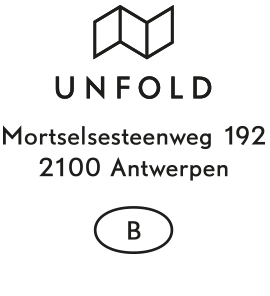 contact
contact